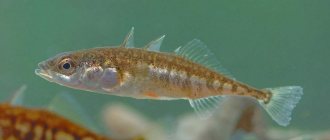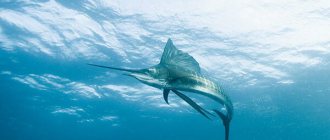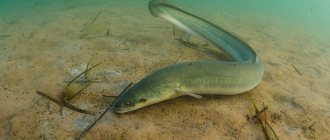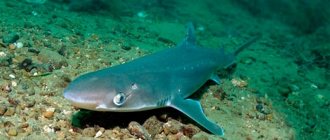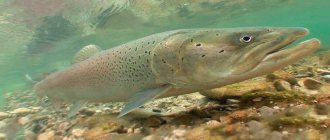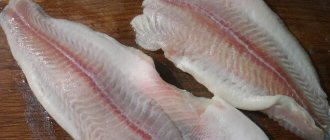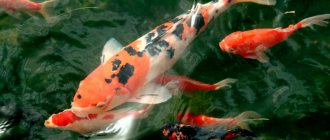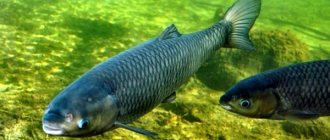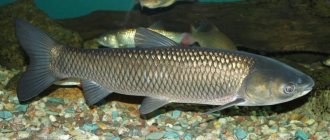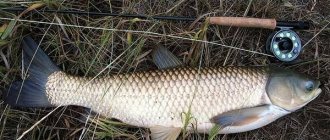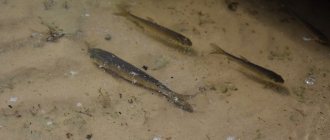Pangasius: what kind of fish is it?
Pangasius is a fish from the order Catfish. Reaches sizes up to 1.3 m and weight about 40 kg. Mostly young individuals weighing no more than 2 kg go on sale. A special feature of the fish is its characteristic dorsal fin with six rays. The Mekong River, where pangasius is found, flows through three countries - Vietnam, Laos and Cambodia. It is grown artificially for sale mainly in Vietnam.
Interesting facts about fish
Pangasius can gain 2-4 kg of weight per year, unlike salmon or trout, which need at least four years for this.
Shark catfish living in their natural environment live up to 15-20 years. On special farms, fish are raised for up to 1 year, then live specimens are sent for processing and sale.
Russians get fish from Vietnam, where they are specially bred. It has been used for food for two millennia.
The Vietnamese economy is largely based on fish farming and the supply of pangasius to different countries. In one of the fishing villages there is even a monument to a shark catfish.
Pangasius has another name - “channel catfish”, since it is found in natural river channels.
Pangasius can be prepared in any combination of ingredients. According to nutritionists, it is combined with almost all food ingredients.
The channel catfish (with its head in the photo) lives well in an aquarium. True, his character is quite cowardly. At first he may rush around in fear, destroying everything in his path. Those who are more cunning pretend to be dead or feign fainting. Having become accustomed to their habitat, they swim calmly and willingly eat any food.
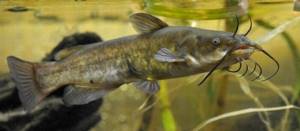
IMPORTANT: Those who are wondering whether pangasius fish is good need to know that in Vietnam it is grown in specially created ponds, where the water is regularly purified and enriched with oxygen.
How to distinguish pangasius from sole
Solefish and pangasius are completely different fish, even belonging to different orders. It is simple to distinguish them externally: the sole, being a flounder-like fish, has a characteristic flat body structure. But since most often the buyer is already dealing with processed fish meat in the form of fillets, the differences may not be noticeable at first glance.
Sea sole fillet is exclusively white in color and is almost transparent. The color of pangasius fillet can vary from white-pink to grayish, while it always has pink areas, which are never found in sole.
In addition, the fillet of the sole is always thin, because this fish is flat. There is no fishy smell in sole fillets. Also, there are no fatty layers in the sole fillet.
Pangasius composition
The vitamin composition of pangasius (calculated per 100 g of weight) is as follows:
- vitamin PP – 2 mg;
- vitamin C – 1.2 mg;
- vitamin E – 1 mg;
- vitamin B1 – 0.2 mg;
- vitamins B2 and B6 – 0.1 mg each.
The fish contains easily digestible cholesterol in the amount of 70 mg.
Microelements included in fish:
- potassium – 240 mg;
- calcium – 50 mg;
- phosphorus – 210 mg;
- magnesium – 20 mg;
- iron – 1 mg;
- chromium – 55 mcg;
- iodine – 50 mcg;
- fluoride – 25 mcg.
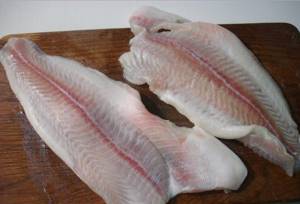
In terms of the content of many microelements, pangasius is not inferior to most marine fish.
Glazed fish
Another complaint about pangasius is the ice glaze, the percentage of which exceeds the permissible standards. Fish fillets are produced by hand in Vietnam:
- bones are removed from the fish,
- excess fat is removed,
- and after deep freezing it is sent for export.
If nutrition experts ask: “Is pangasius in this form harmful?”, with a high degree of probability we will receive the answer “Yes, this pangasius can be harmful.” Chemical analysis revealed an increased content of phosphates in the ice covering the fish.
Pangasius calorie content
Fish has the following nutritional value:
- proteins – 17.2%;
- fats – 5.1%.
There are no carbohydrates in the meat. About a quarter of the fat is healthy unsaturated fatty acids Omega-3 in an amount of up to 1.5% of the total weight. Water makes up 77% of the total substances in fish.
The calorie content of pangasius per 100 grams, depending on its method of preparation, is presented in the table.
| Cooking method | Calorie content, kcal/100 g |
| No processing | 89 |
| Boiled or steamed | 89 |
| Baked | 149 |
| Fried | 202 |
Sales on the domestic and foreign markets
Farms and large industrial enterprises specialize in breeding pangasius. For this purpose, not a river is used, but artificially constructed reservoirs. These ponds receive water directly from the Mekong. But still it differs significantly from the original in its composition.
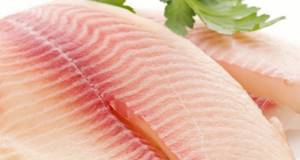
Pangasius is an omnivore
It is difficult to answer specifically what pangasius eats. This fish is considered almost omnivorous. Depending on where the pangasius lives, it is determined where it will end up: on the domestic or foreign market. At the same time, export options may differ slightly.
Let’s say a fillet arrives in Europe, cleaned of excess fat, packaged in accordance with all the rules and having an attractive appearance. Unfortunately, in Russian stores you can see pieces of unknown color , covered in layers of ice. They are often sold in a box without packaging. Of course, the difference in price can be quite noticeable.
Negative judgments
It is difficult to determine how well fish grown in Vietnam meets quality standards, because there are many fierce defenders of this product and those who are openly opposed to it. There are also different opinions about the health benefits of pangasius fillets. The high content of protein, fatty acids and low calorie content of the product are indicated. However, all the benefits may come to naught if the shark catfish was raised in inappropriate conditions.
There is no need to say that the Mekong River, where the fish live, is absolutely clean. It contains a large amount of different types of garbage. There is also often information about the ingress of industrial waste and sewage, which are considered a source of toxic substances.
It is noteworthy that pangasius is omnivorous, and breeders actively take advantage of this. Some of them feed the fish with whatever they can find. To speed up growth, some producers even stuff shark catfish with antibiotics and hormones. To increase the weight of the carcass, it is stuffed with polyphosphates. These compounds provide moisture absorption. Before pangasius reaches stores in Europe, it sometimes has to go through several cycles of defrosting and freezing. This certainly doesn't add any freshness to it. Some warehouses are unsanitary.
Defenders position
Despite the fact that the Mekong is heavily polluted, a large number of different animals and birds are found there, and all of them thrive in such waters. Defenders of pangasius argue that nature has managed to recover over a certain period of time. They compare the arguments that this is an omnivorous fish with the omnivorous nature of, for example, pigs. The same goes for crayfish, which they like to eat with beer. These creatures generally feed on carrion.
Of course, parasites can feel good in any environment, but heat treatment helps to cope with them. As for antibiotics, they are also used on chickens, although this does not prevent people from continuing to eat them.
The real state of affairs
Pangasius is exported to many countries around the world. In Europe, they carefully monitor the compliance of imported products with standards. Rosselkhoznadzor is responsible for similar functions in Russia. From time to time, imports are banned due to unsuitable quality. The list of companies that cannot supply pangasius to the Russian market is updated from time to time.
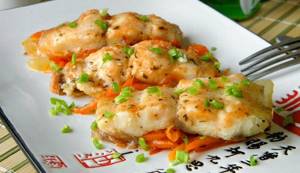
This fish is grown for export
This fish is grown for export by large producers who have international safety licenses. They use special aerators to oxygenate the water in pools and ponds.
They also have powerful filters to remove contaminants. Responsible breeders adhere to global standards of sanitary conditions in production, otherwise their products simply would not end up on store shelves in the United States and Europe. When growing pangasius, they feed it with pellets made from fish waste, enriching them with mineral and vitamin supplements.
On small farms, a completely different environment may reign. Here the fish are in close quarters. If the environment is not clean enough, the pangasius may get sick. This is where antibiotics come into play. However, such a product has almost zero chance of entering the markets of foreign countries.
Despite the many myths surrounding pangasius, it remains a common farmed fish. Sturgeon and carp are grown under the same conditions, so this pangasius can be safely eaten. It is unlikely that it will be able to cause more harm to health than the same legs stuffed with medicine.
How is pangasius useful?
The benefits of pangasius fillet, due to the elements it contains, are as follows:
- improvement of brain activity and memory (thanks to phosphorus and fats);
- normalization of skin condition (vitamins and fats);
- improving the structure of hair and nails, increasing their strength (amino acids and calcium);
- strengthening bones, joints and teeth (calcium, phosphorus);
- restoration of functions of the musculoskeletal system (polyunsaturated fats);
- preventing the early development of joint diseases, in particular osteoporosis;
- prevention of early aging (antioxidants and polyunsaturated fats).
We recommend reading: Sea bass: calorie content per 100 grams, composition, where it is found
Among nutritionists, there is an opinion that regular consumption of fillet improves sleep and increases stress resistance.
Is pangasius beneficial for pregnant and lactating women?
If the meat meets the standards and does not contain heavy metal salts, it can be consumed during pregnancy, but this use will not be a recommendation.
On the other hand, fillet contains quite a lot of iron and other trace elements that have a beneficial effect on the circulatory system, which makes it possible to use their beneficial properties in the prevention of anemia.
Another beneficial property of fillet is the presence of a sufficient amount of chromium, which is used as a regulator of insulin production in the body. Thereby helping mother and baby normalize glucose metabolism in the body.
However, the very high risk of getting a low-quality product, as well as the relative difficulty in assimilation even by a healthy body, make this fish undesirable during pregnancy or lactation.
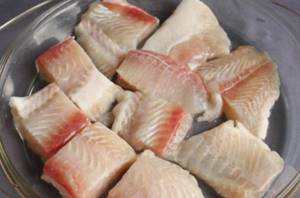
Is it possible to give pangasius to children?
There is no doubt that this product has a positive effect on the child’s body. It contains a large amount of phosphorus and calcium, due to which children’s skeletal system is strengthened and the functioning of the nervous system is improved.
Important! Like any other fish product, it can be consumed by children starting from the age of three.
However, do not forget about the origin of this product. Therefore, before giving pangasius fillet to a child, you should weigh the pros and cons. In addition, it is advisable to do this after consulting a pediatrician or doctor.
Also, small bones, which abound in pangasius meat, pose a relative danger to children. Therefore, when feeding it to small children, you should carefully examine the pieces of meat and, if possible, get rid of small bones.
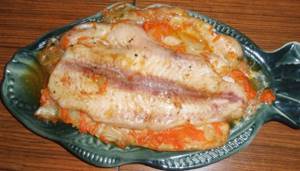
Important points when purchasing
Despite the fact that you can eat fish without fear for your own health, it does not hurt to pay attention to a number of important factors.

There are a number of recommendations before purchasing
Key recommendations are:
- Look at the color of the carcass. If it is yellow, this indicates that the fish has been raised in unsuitable conditions. A red tint indicates a lack of oxygen or artificial coloring of the fillet. White and light pink colors can be considered safe.
- If possible, use the carcass rather than the fillet. The latter is treated with polyphosphates to increase the mass of the final product.
- Availability of glazing. Manufacturers often resort to water freezing to protect products from weathering. But it should be a thin crust of ice, and not a huge block, as can often be seen in domestic supermarkets.
- Fat content. The smaller it is, the better. A large percentage of it indicates a low-grade product.
Cost can also tell you a lot. Pangasius, even of the best quality, is inexpensive. If the price is lowered even lower, it is quite possible that this is a stale product or a product that was subjected to improper transportation.
How to cook delicious pangasius
Fish goes well with many other foods and can be prepared in a variety of ways. There are more than a hundred recipes that include pangasius: from soups and main courses to pies and rolls.
Mostly fish is cooked together with vegetables, generously seasoned with herbs. It can be baked in batter or sour cream. The fillet can also be grilled and served in a variety of wines.
Actually, there are practically no incompatible combinations of products that include pangasius. This is what explains its great popularity.

Habitat, what it eats, how it reproduces
The permanent habitat of fish has a huge impact on the quality of the resulting product.
In the wild, shark catfish live in the fresh waters of rivers and lakes in Vietnam, Laos, Cambodia, and Thailand. For the most part, these are the waters of the Mekong and Chao Phray rivers. Tra is found primarily in the lower reaches of the Mekong River basin, while bass is found along the entire length of the river. Individuals of freshwater sharks usually live in small schools.
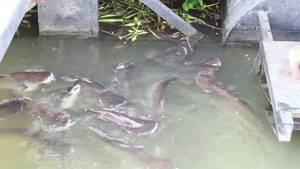
These are voracious predators, unpretentious and omnivores. In the wild, finding food for them is not difficult. They subsist on small fish, insects, plankton, plants, fruits, carcasses of small rodents, and feed on everything they can swallow.
The female reaches sexual maturity after three years. Spawning begins in June and lasts until November. The female lays up to 100 thousand eggs in portions among the algae. After three days, the young begin to swim. In the wild, shark catfish reproduce 2 times a year; in fish farms, spawning occurs 4 times a year.
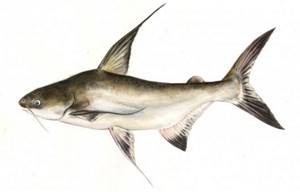
The local population has consumed pangasius meat for food for thousands of years. Farms began to be created in the 40s of the last century. Breeding shark catfish on an industrial scale is of great importance for the economy of Vietnam, as a global supplier of these products.
Fishing is profitable, since the demand is quite high, and breeding does not require large expenses. The omnivorous and voracious shark catfish is rapidly gaining weight, it is unpretentious and is able to live in conditions of large crowding of carcasses, which often occurs on fish farms.
Aquarists have adapted it for keeping in special aquariums, where the individual grows up to 50-70 cm. This is quite troublesome and not cheap; such large specimens require a large aquarium volume, at least 1000 liters.

The aquarium should be elongated in length; the shark catfish, like its sea namesake, loves to describe large circles around the water area. Finding neighbors for an indoor voracious shark is problematic, because it will effortlessly swallow any small fish.
Harm of pangasius and contraindications for use
The question of whether pangasius is harmful or beneficial remains open. The beneficial properties of fish are very diverse, but this applies to specimens grown in more or less acceptable conditions.
Vietnam is a relatively poor country, which cannot but affect the organization of fish farming. The food that pangasius feeds on is not always of natural origin. These are often chemicals designed to stimulate rapid growth and weight gain in fish in order to reduce the time it takes to grow them. In addition, the cost (and therefore quality) of these feeds can be very low.

The environment in which the fish is grown also plays an important role. The Mekong River is considered one of the dirtiest on the Indochina Peninsula, so the whole “bouquet” of its pollution in the form of industrial wastewater and heavy elements will, one way or another, affect the quality of fish meat.
Naturally, such growing conditions are not present everywhere, but it would be naive to believe that a poor country will thoroughly follow the letter of the law in complying with food standards, especially those issued in other countries.
Recommended reading: Benefits of lamb
On the other hand, a responsible seller always conducts a veterinary examination of the fish before putting it up for sale, the results of which must be provided to the buyer upon request. In this way, you can avoid almost all the negative consequences of eating this fish.
But even “clean” fish grown under normal conditions can be harmful, since it has a number of contraindications. First of all, this applies to allergies to fish and individual intolerance to this particular type of meat. In addition, pangasius is a rather “heavy” fish for the gastrointestinal tract and should not be consumed too much.
Attention! The daily norm of pangasius meat fillet for an adult is from 120 to 140 g. For children, this figure is approximately half as much. You should not exceed it.
Features of the effect on the body
For adult men and women
Pangasius is widely exported to many European countries , including Russia and Ukraine. Previously, it was imported to the USA and Canada.
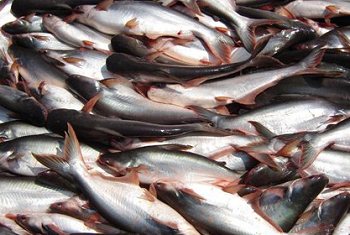
But after inspections revealed the presence of harmful additives, hormones and toxic impurities in the product, its import into these countries ceased.
Currently, the exporter has tightened control over the conditions for growing pangasius, since selling it abroad brings big profits to the country. Russian companies that have entered into contracts for the import of products try to prevent low-quality goods from being sold.
The product is useful for an adult: such fish diversifies the diet and saturates the body with useful substances. It helps to maintain good physical shape for those whose work involves constant stress and tension. Helps fight fatigue.
This tender meat is recommended to be eaten during the period after illness and after surgery. It is easily digestible and saturates well.
For pregnant and lactating women
There are no contraindications to the use of pangasius for pregnant women and nursing mothers. High-quality fish, steamed, with vegetables as a side dish or in another form, is only useful for this category of consumers. You should just avoid fried and fatty fish .
The interesting position and birth of a baby is associated with hormonal changes in a woman’s body. This leads to frequent mood swings and insomnia. Deliciously cooked fish lifts your mood and helps normalize sleep. And with a shortage of free time, a young mother has another plus - the speed and ease of preparing it.
When purchasing a product in a store, you need to look at its appearance. You should not take risks if there is a suspicion that the product has been re-frozen. You should not store purchased fillets for a long time.
What is good for children
This fish is not prohibited for children under 3 years old . It is especially useful boiled or steamed.
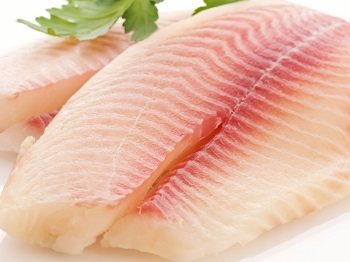
The requirements for its quality are the same.
Properly cooked fish will diversify the menu of little whims.
It contains many minerals necessary for the growth and formation of bones , muscles, teeth and other organs of the baby.
This dietary product is easily accepted by the child's body.
Keep in mind that pangasius is a river fish. There are many small bones in it.
Before offering a fish dish to your baby, you need to clean all the bones.
Is it harmful in old age?
For mature people, fish is very useful . After all, they have more brittle bones and often have problems with the heart and blood pressure. Their diet should include fish dishes.
And vision problems at this age are not uncommon . The tender pulp is very useful. It is nutritious and tasty.
It is also important that it maintains healthy skin and improves hair condition. Helps normalize blood pressure and improve heart function. This is a means of preventing atherosclerosis.
It is not advisable to eat fish for those who have serious abnormalities in the gastrointestinal tract . After all, no one can give a 100% guarantee of its quality. A sick stomach is very sensitive and can fail even with minor deviations in the quality of food.
How to choose the right pangasius
Pangasius rarely appears on sale in carcass form. This is due to the fact that its cutting is usually done at the place of cultivation, and then the fillet is subjected to shock freezing and transported to the place of sale. This greatly simplifies the process of choosing meat.
Important! There is a very simple rule for this product: the closer the color of the fillet is to pink-white, the higher the likelihood that the fish was raised in acceptable conditions and the technological process was not violated during its processing.
The grayer the fillet, the worse the product. Even a hint of a grayish tint indicates that it is better not to purchase the fish: most likely, the conditions for growing and feeding the fish did not meet even the lowest standards.

Recommendations for eating fish
Pangasius is known for its tasty, tender, lean meat . It is easy to process and cheap. You can prepare appetizers, main courses, soups, and salads from defrosted fillets. The pulp can be fried, baked, steamed, in a double boiler, or a slow cooker.
The fillet cooks very quickly , and its beneficial properties are not lost during long-term heat treatment. Cooking time for different methods is:
- steamed – 40 minutes;
- in a frying pan – 30 minutes;
- in the oven – 1 hour;
- in water – 10 minutes.
It is not necessary to wait until the semi-finished product is completely defrosted . High-quality fish must be washed well and cooked according to the recipe. At the same time, the processing time is slightly increased. And when slightly frozen, it is easier to cut into pieces.
It tastes like chicken breast, tender, juicy and hardly needs cutting.
You can eat this fish every day. A couple of pieces of the product are enough to satiate. This is exactly her daily requirement.
On the pages of our website you will learn all about the dangers and benefits of blue whiting fish, and in what form it is best to consume it.
Do you know how red caviar is beneficial for the body? You will find the chemical composition, nutritional value and content of useful substances in this article.
What are the benefits of chum salmon milk? Read all about the benefits of this product in our following material: https://foodexpert.pro/produkty/ryba-i-moreprodukty/moloki-lososevyh.html.

